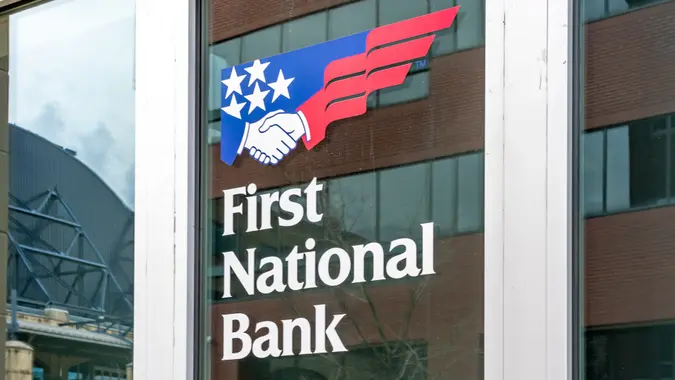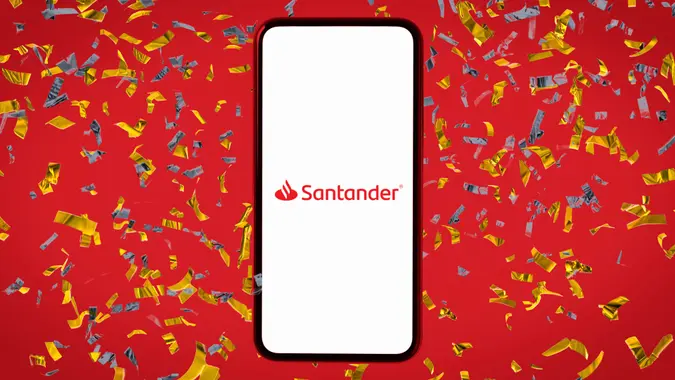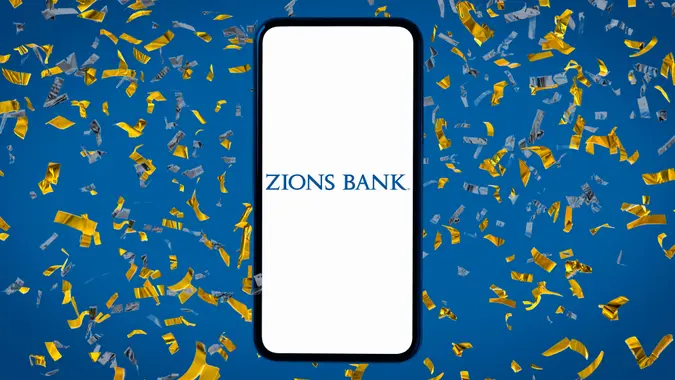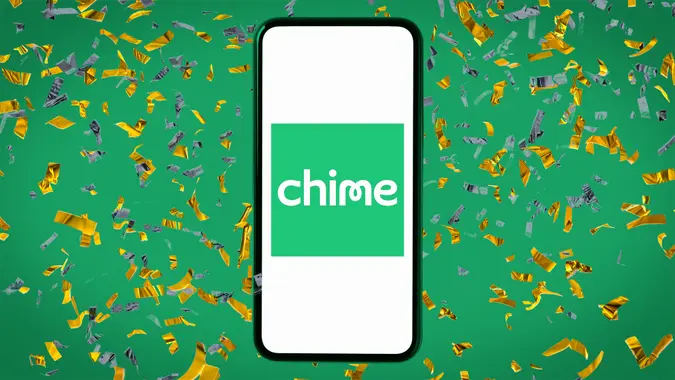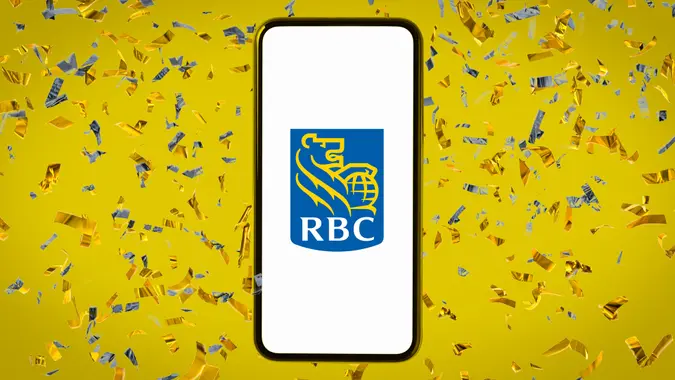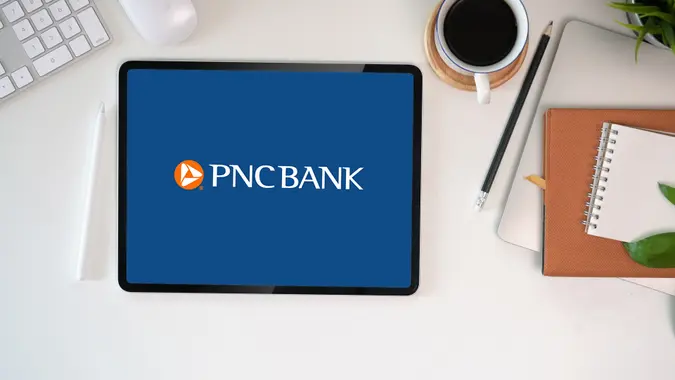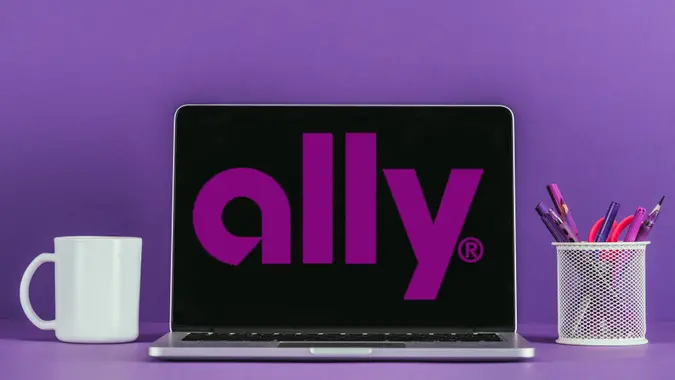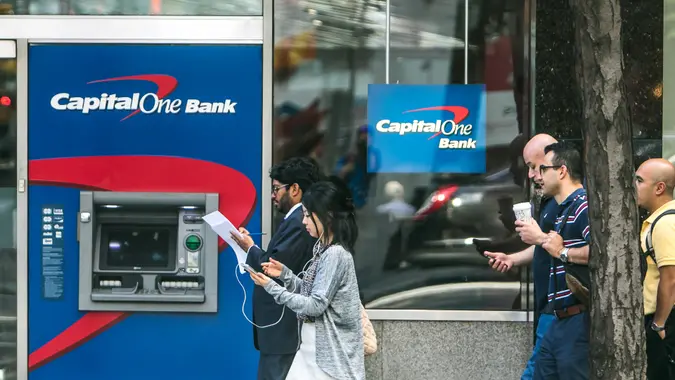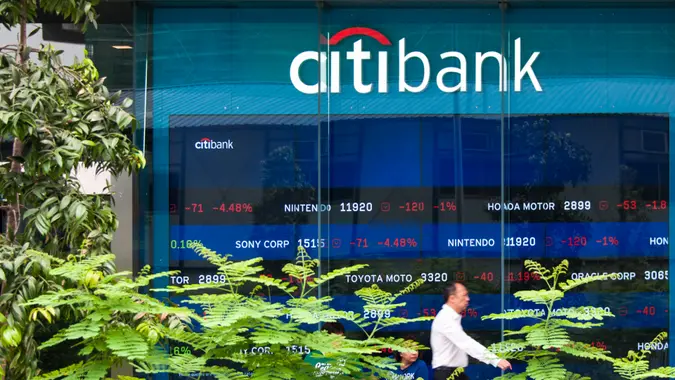Capital One vs. Chase: Which Bank Is Better for You?

Commitment to Our Readers
GOBankingRates' editorial team is committed to bringing you unbiased reviews and information. We use data-driven methodologies to evaluate financial products and services - our reviews and ratings are not influenced by advertisers. You can read more about our editorial guidelines and our products and services review methodology.

20 Years
Helping You Live Richer

Reviewed
by Experts

Trusted by
Millions of Readers
When choosing the best bank or financial institution, start by assessing your short-term and long-term banking needs. Think about your savings goals and the features that matter most to you. Do you need a convenient checking account? Are high interest rates on savings a priority? Focus on what suits your needs best.
Though there are many banking options available, here is a closer look at how Capital One and Chase compare to one another.
Quick Overview of Capital One and Chase
Capital One is the ninth largest bank and at the end of December had over $480 billion in assets. The bank has more than 700 branches and 70,000 ATMs.
Chase is America’s largest bank and is part of the consumer and commercial banking division of JPMorgan Chase & Co. — it merged with the firm in 2000. Today, the financial institution has over $3.9 trillion in assets, as well as a vast network of over 4,700 branches and 15,000 ATMs.
Here are the key benefits of each bank:
- Capital One:
- No minimum balance requirements
- No monthly service fees
- Higher interest rates than leading competitors
- Chase:
- Variety of account options
- User-friendly mobile app and interface
- Sign-up bonus offer for some new accounts
| Feature | Capital One | Chase |
|---|---|---|
| Branch Locations | Over 700 | Over 4,700 |
| ATM Locations | 70,000 | 15,000 |
| Types of Accounts Offered | Checking, savings, credit cards, loans | Checking savings, credit cards, loans |
Capital One vs. Chase: Account Types Comparison
Checking Accounts
- Capital One: Has a 360 Checking account and MONEY Teen checking account. The 360 checking account requires no minimum opening, no monthly service fees and pays APY no matter what your balance. There is no overdraft fee.
- Chase: Offers eight checking account options that are divided into three categories — Everyday, Premium and Kids & Students. Chase’s Total Checking requires no minimum to open, has a waivable monthly service fee of $12 and has an overdraft fee of $34.
Savings Accounts
- Capital One: Offers two online savings accounts: 360 Performance Savings for adults and the Kids Savings Account for children and teens.
- Capital One’s 360 Performance Savings offers a competitive APY, has no monthly fees and no minimum deposit requirements.
- The Kids Savings Account offers a APY, has no monthly fees and no minimum deposit requirements.
- Chase: Offers both Chase Savings and Chase Premier Savings.
- Chase Savings offers a relatively low APY of . This account earns interest across all balance tiers and has a $5 monthly service fee, waivable if you meet certain balance or transactions requirements. You can also waive the monthly fee if you link qualifying Chase accounts.
- Chase Premier Savings has the same standard APY as the regular savings account. When you link the account to qualifying accounts or make a set number of transactions from a linked checking account, you’re eligible for a higher relationship rate. The $25 monthly service fee is waivable with a $15,000 beginning day balance.
Loans
- Capital One: Offers auto loans, but doesn’t offer mortgage, home equity or personal loans. Capital One auto loans have an easy prequalification process, competitive interest rates and personalized financing options. Loan terms range between 24 and 84 months. Capital One also offers business loans.
- Chase: Also offers auto loans, but you have to pre-qualify with a soft credit check. These loans have no application fee and no down-payment required. Chase also offers business loans, mortgage and home equity loans.
| Account Type | Capital One | Chase |
|---|---|---|
| Checking | -Capital One 360 Checking -TEEN Money Checking |
-Chase Total Checking -Chase Secure Banking -Chase Premier Plus Checking -Chase First Banking -Chase High School Checking -Chase College Checking -Chase Sapphire Banking -Chase Private Client Checking |
| Savings | -Capital One 360 Performance Savings -Kids Savings Account |
-Chase Savings -Chase Premier Savings |
| Loans | Auto loans, business loans | Auto loans, home equity and mortgages, business loans |
Capital One vs. Chase: Interest Rates
Savings Account Rates
- Capital One: Offers an APY of on its 360 Performance Savings and APY on its Kids Savings Account.
- Chase: Offers a less competitive standard rate of on both savings account offerings.
CD Rates
- Capital One: Term lengths on CDs range from six months to five years and require no minimum deposit. APYs range from to .
- Chase: Term lengths range from one month to 10 years and require a $1,000 minimum deposit to open. Rates range from to .
Loan Interest Rates
- Capital One: Offers auto loans as well as business loans. Loan terms are between 24 to 84 months and amounts can go up to $75,000. Capital One also offers a business line of credit.
- Chase: Offers auto, mortgage, home equity and business loans. Chase does require a prequalification for auto loans and rate information isn’t transparent on the site.
| Account Type | Capital One | Chase | Notes |
|---|---|---|---|
| Checking Accounts | None | Capital One checking accounts earn interest no matter the balance. | |
| Savings Accounts | Up to | You will earn on a Capital One 360 Performance Savings account no matter the balance. | |
| CDs | Up to | Up to | Capital One requires no minimum deposit for CDs, while Chase requires a $1,000 minimum deposit. |
| Loans | Rate varies | Rate varies | Auto loan rate information may be best in person depending on amount and make/model of vehicle. |
Capital One vs. Chase: Fees and Charges
Monthly Maintenance Fees
- Capital One: Doesn’t charge monthly maintenance fees on most personal accounts.
- Chase: Monthly maintenance fees range from $0 to $25 — these fees can be waived.
ATM Fees
- Capital One: Has several fee-free ATMs and doesn’t charge for out-of-network ATMs, although third-party fees may apply.
- Chase: Charges $3.00 for cash withdrawals from non-network ATMs in the U.S. However with certain accounts that fee can be waived.
Overdraft Fees
- Capital One: Doesn’t charge overdraft fees.
- Chase: Charges a $34 fee per transaction that overdraws your account by more than $50, with a maximum of 3 fees per business day.
| Fee Type | Capital One | Chase |
|---|---|---|
| Monthly Fees | None | $0 to $25 |
| Overdraft Fees | None | $34 |
| ATM Fees | None | -$3.00 for non-Chase ATMs in the U.S.; $5 for non-Chase ATMs outside the U.S. -Fee may be waived for certain accounts |
| Minimum Balance Requirements | None | No minimum deposits to open account but must keep monthly minimums if you want to waive service fees. |
Pros and Cons: Capital One vs. Chase
If you’re trying to decide between whether Capital One or Chase is the best bank for you, it is handy to look at the pros and cons.
Capital One Pros
- Higher interest rates than leading competitors
- No minimum balance requirements
- No monthly service fees
Chase Pros
- Sign-up bonus offer for some new accounts
- User-friendly mobile app and interface
- Good variety of account options
Capital One Cons
- No money market accounts
- Few account options
Chase Cons
- Monthly service fees
- ATM and overdraft fees
- Lower APYs
Capital One vs. Chase: Who Should Bank with Which?
Capital One and Chase are well-respected financial institutions and both ranked among GOBankingRates’ Best Banks of 2025. Chase offers a variety of account options, a sign-up bonus for certain checking accounts and a large branch network. Capital One stands out for its no-fee accounts and high interest rates.
The best choice depends on what matters most to you. If you want multiple account options and in-person banking, Chase is a strong option. If you prioritize higher interest rates and fewer fees, Capital One may be the better fit.
FAQ
Here are answers to some commonly asked questions about Capital One and Chase to help you decide which bank is right for you.- What are the main differences between Capital One and Chase accounts?
- Capital One is mainly online, while Chase has both online options and the ability to visit a bank.
- Capital One has no monthly maintenance fees, overdrafts or ATM fees.
- Chase charges waivable monthly fees as well as overdraft and ATM fees.
- Chase offers more checking account options, while Capital One offers better APYs for almost all of its products.
- Which bank offers better rewards for credit cards, Capital One or Chase?
- The choice of credit card depends on a customer's preferences.
- Chase is better for travelers who use transfer partners and maximize rewards.
- Capital One is better for simple, flat-rate earning with no bonus categories.
- The choice of credit card depends on a customer's preferences.
- Are there any fees associated with Capital One and Chase accounts?
- Capital One doesn't have monthly maintenance fees, overdrafts or out-of-network ATM fees.
- Chase has waivable monthly maintenance fees, overdraft fees and out-of-network ATM fees.
- Which bank has better customer service, Capital One or Chase?
- Capital is a good fit for those who prefer online banking, but if you prefer in-person branch options Chase may be more suitable for you.
Daria Uhlig and Caitlyn Moorhead contributed to the reporting for this article.
Rates are subject to change; unless otherwise noted, rates are updated periodically. All other information on accounts is accurate as of March 6, 2025.
*Capital One interest rates accurate as of 11/4/2025. See website for all current rates.
Editorial Note: This content is not provided by any entity covered in this article. Any opinions, analyses, reviews, ratings or recommendations expressed in this article are those of the author alone and have not been reviewed, approved or otherwise endorsed by any entity named in this article.
The information related to Chase accounts and credit cards was collected by GOBankingRates and has not been reviewed or provided by the issuer of these products/cards. Product details may vary. Please see the issuer’s website for current information. GOBankingRates does not receive commission for these products.
J.P. Morgan Wealth Management is a business of JPMorgan Chase & Co., which offers investment products and services through J.P. Morgan Securities LLC (JPMS), a registered broker-dealer and investment adviser, member FINRA and SIPC. Insurance products are made available through Chase Insurance Agency, Inc. (CIA), a licensed insurance agency, doing business as Chase Insurance Agency Services, Inc. in Florida. Certain custody and other services are provided by JPMorgan Chase Bank, N.A. (JPMCB). JPMS, CIA and JPMCB are affiliated companies under the common control of JPMorgan Chase & Co. Products not available in all states.
INVESTMENT AND INSURANCE PRODUCTS: • NOT A DEPOSIT • NOT FDIC INSURED • NOT INSURED BY ANY FEDERAL GOVERNEMENT AGENCY • NO BANK GUARANTEE • MAY LOSE VALUE
Chase Total Checking has a monthly fee of $12 or $0 with one of the following, each monthly statement period: Electronic deposits made into this account totaling $500 or more, such as payments from payroll providers or government benefit providers, by using (i) the ACH network, (ii) the Real Time Payment or FedNowSM network, (iii) third party services that facilitate payments to your debit card using the Visa® or Mastercard® network, OR a balance at the beginning of each day of $1,500 or more in this account, OR an average beginning day balance of $5,000 or more in any combination of this account and linked qualifying Chase checking, savings, and other balances.
With Chase Overdraft AssistSM, Chase won’t charge an insufficient funds fee if you’re overdrawn by $50 or less at the end of the business day, or if you’re overdrawn by more than $50 and you bring your account balance to overdrawn by $50 or less at the end of the next business day (you have until 11 p.m. ET, or 8 p.m. PT, to make a deposit or transfer). Chase Overdraft Assist does not require enrollment and comes with eligible Chase checking accounts.
Editorial Note: This content is not provided by Chase. Any opinions, analyses, reviews, ratings or recommendations expressed in this article are those of the author alone and have not been reviewed, approved or otherwise endorsed by Chase.
Our in-house research team and on-site financial experts work together to create content that’s accurate, impartial, and up to date. We fact-check every single statistic, quote and fact using trusted primary resources to make sure the information we provide is correct. You can learn more about GOBankingRates’ processes and standards in our editorial policy.
- Federal Reserve. 2024. "Large Commercial Banks."
- CompaniesMarketCap. "JPMorgan Chase (JPM) - Total assets."
 Written by
Written by  Edited by
Edited by 



